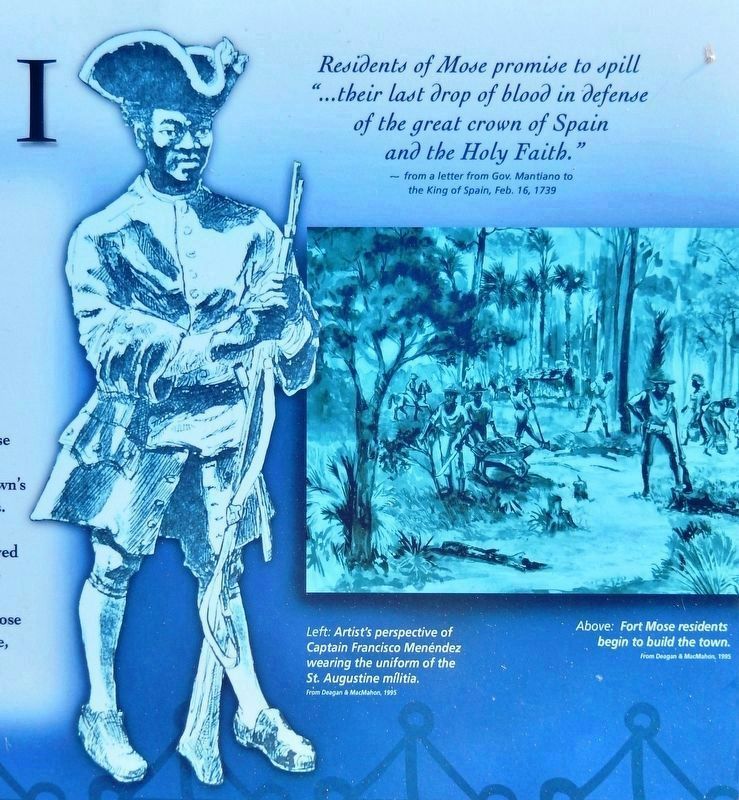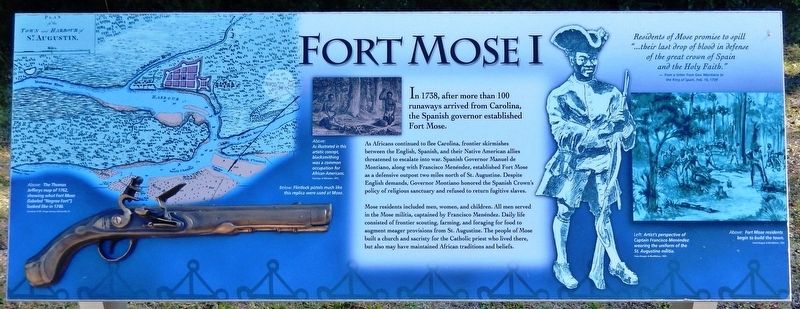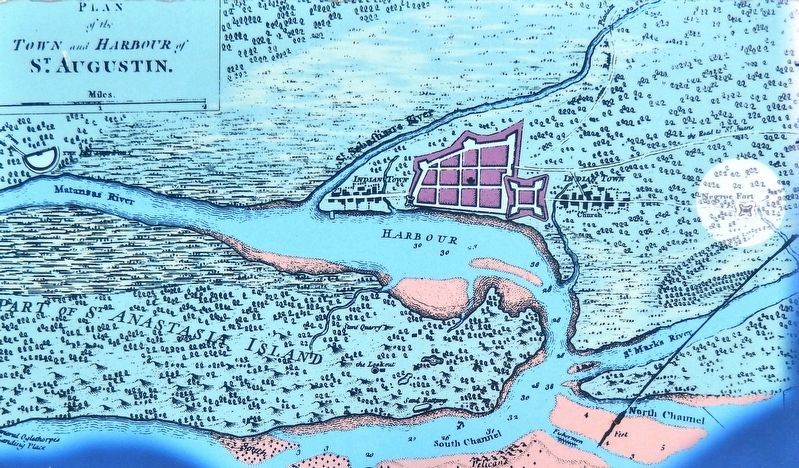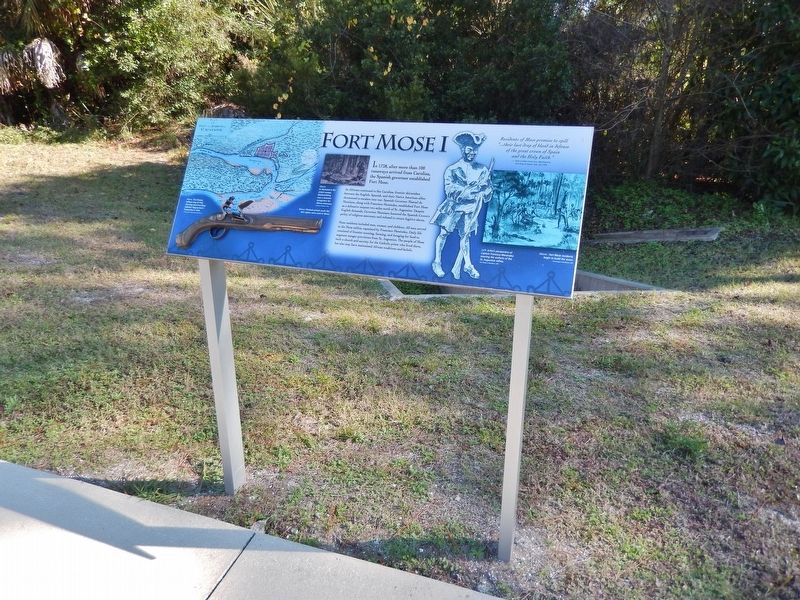St. Augustine in St. Johns County, Florida — The American South (South Atlantic)
Fort Mose I
Fort Mose Historic State Park
As Africans continued to flee Carolina, frontier skirmishes between the English, Spanish, and their Native American allies threatened to escalate into war. Spanish Governor Manuel de Montiano, along with Francisco Menéndez, established Fort Mose as a defensive outpost two miles north of St. Augustine. Despite English demands, Governor Montiano honored the Spanish Crown's policy of religious sanctuary and refused to return fugitive slaves.
Mose residents included men, women, and children. All men served in the Mose militia, captained by Francisco Menéndez. Daily life consisted of frontier scouting, farming, and foraging for food to augment meager provisions from St. Augustine. The people of Mose built a church and sacristy for the Catholic priest who lived there, but also may have maintained African traditions and beliefs.
Erected by Fort Mose Historic State Park.
Topics. This historical marker is listed in these topic lists: African Americans • Colonial Era • Forts and Castles • Settlements & Settlers. A significant historical year for this entry is 1738.
Location. 29° 55.729′ N, 81° 19.514′ W. Marker is in St. Augustine, Florida, in St. Johns County. Marker is on Fort Mose Trail, 0.2 miles east of North Ponce De Leon Boulevard (U.S. 1), on the right when traveling north. Marker is located in Fort Mose Historic State Park, beside the sidewalk leading from the parking lot to the visitor center. Touch for map. Marker is at or near this postal address: 15 Fort Mose Trail, Saint Augustine FL 32084, United States of America. Touch for directions.
Other nearby markers. At least 8 other markers are within walking distance of this marker. El Pueblo de Gracia Real de Santa Teresa de Mose (a few steps from this marker); Escape & Flight (a few steps from this marker); Bloody Mose (a few steps from this marker); Fort Mose II (a few steps from this marker); British Enslavement (a few steps from this marker); Evacuation (within shouting distance of this marker); Middle Passage (within shouting distance of this marker); African Origins (within shouting distance of this marker). Touch for a list and map of all markers in St. Augustine.
Related markers. Click here for a list of markers that are related to this marker. Fort Mose Historic State Park
Also see . . .
1. The journey of Africans to St. Augustine: Fort Mose. Fort Mose guarded the northern land and water approaches to St. Augustine, and the Fort Mose militia, a community-based free black militia, had primary responsibility for scouting and information gathering on the frontier. They mastered the intricacies of European warfare, and integrated elements from their own traditions. Residents of Fort Mose came from diverse cultures in the Caribbean,
and West Africa their skilled labor, technology, art, music, ideas, and traditions served as valuable resources to the Spanish residents of nearby St. Augustine.
A mosaic of people with diverse origins in Africa, the Caribbean, Florida, and the Carolinas made Mose their home. Documents tell of intermarriage among Indian, African, and European peoples at Mose, a common practice throughout the Spanish colonies in America. (Submitted on December 2, 2018, by Cosmos Mariner of Cape Canaveral, Florida.)
2. Fort Mose Historic State Park. Florida Department of Environmental Protection (Submitted on December 3, 2018.)

from Deagan & MacMahon, 1995
3. Marker detail: Captain Francisco Menéndez wearing the uniform of the St. Augustine militia
Residents of Mose promise to spill “their last drop of blood in defense of the great crown of Spain and the Holy Faith.”
from a letter from Gov. Mantiano to the King of Spain, Feb 16, 1739
(left) Artist’s perspective of Captain Francisco Menéndez wearing the uniform of the St. Augustine militia.
(above) Fort Mose residents begin to build the town.
from a letter from Gov. Mantiano to the King of Spain, Feb 16, 1739
(left) Artist’s perspective of Captain Francisco Menéndez wearing the uniform of the St. Augustine militia.
(above) Fort Mose residents begin to build the town.
Credits. This page was last revised on January 2, 2019. It was originally submitted on December 1, 2018, by Cosmos Mariner of Cape Canaveral, Florida. This page has been viewed 417 times since then and 32 times this year. Photos: 1. submitted on December 1, 2018, by Cosmos Mariner of Cape Canaveral, Florida. 2, 3, 4. submitted on December 2, 2018, by Cosmos Mariner of Cape Canaveral, Florida. • Bernard Fisher was the editor who published this page.


